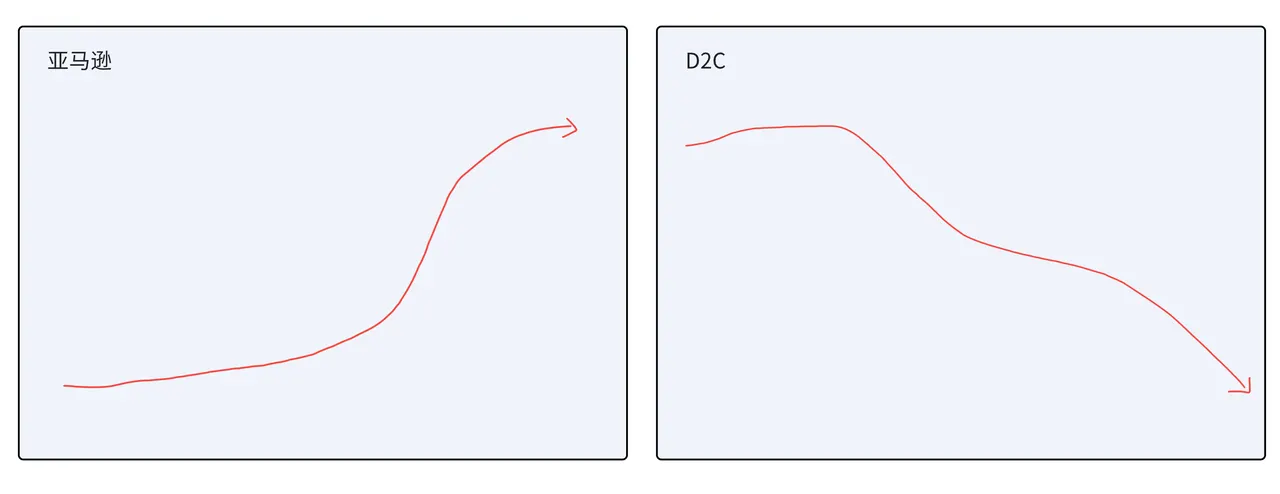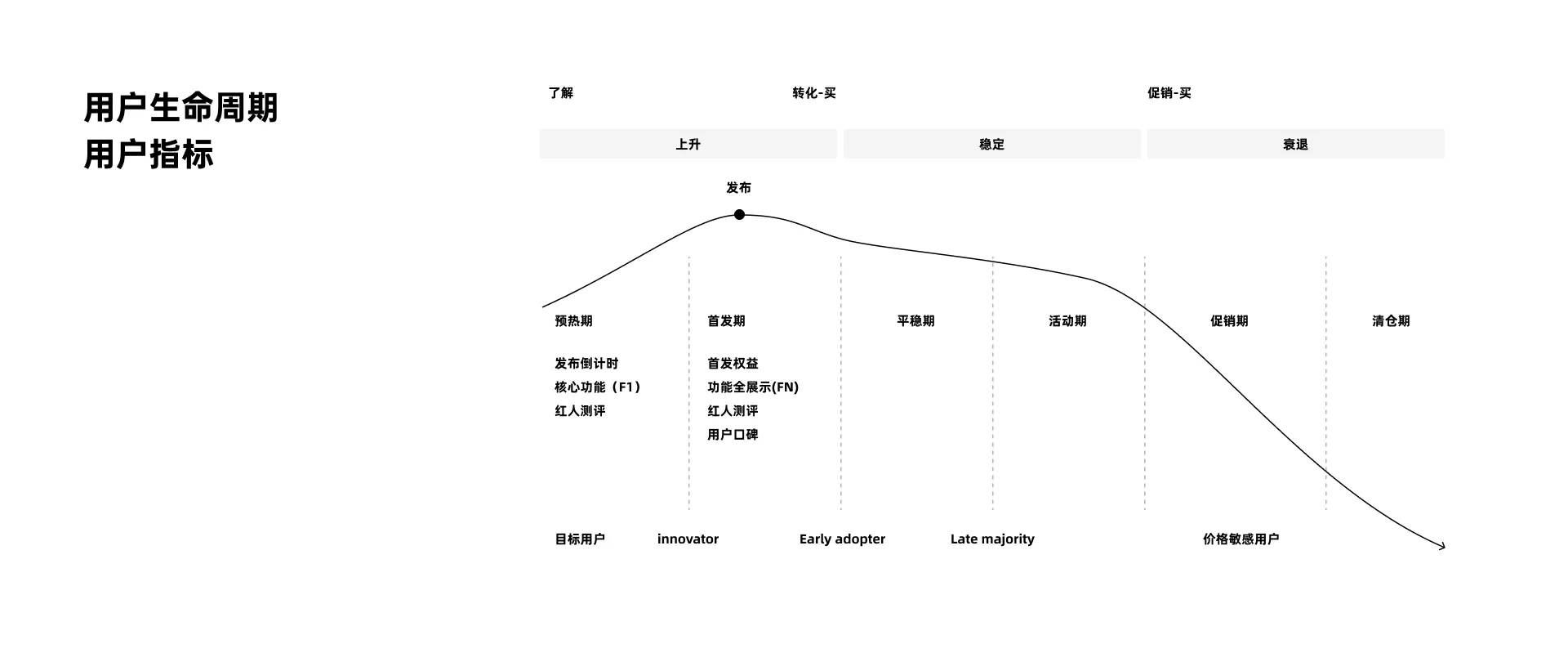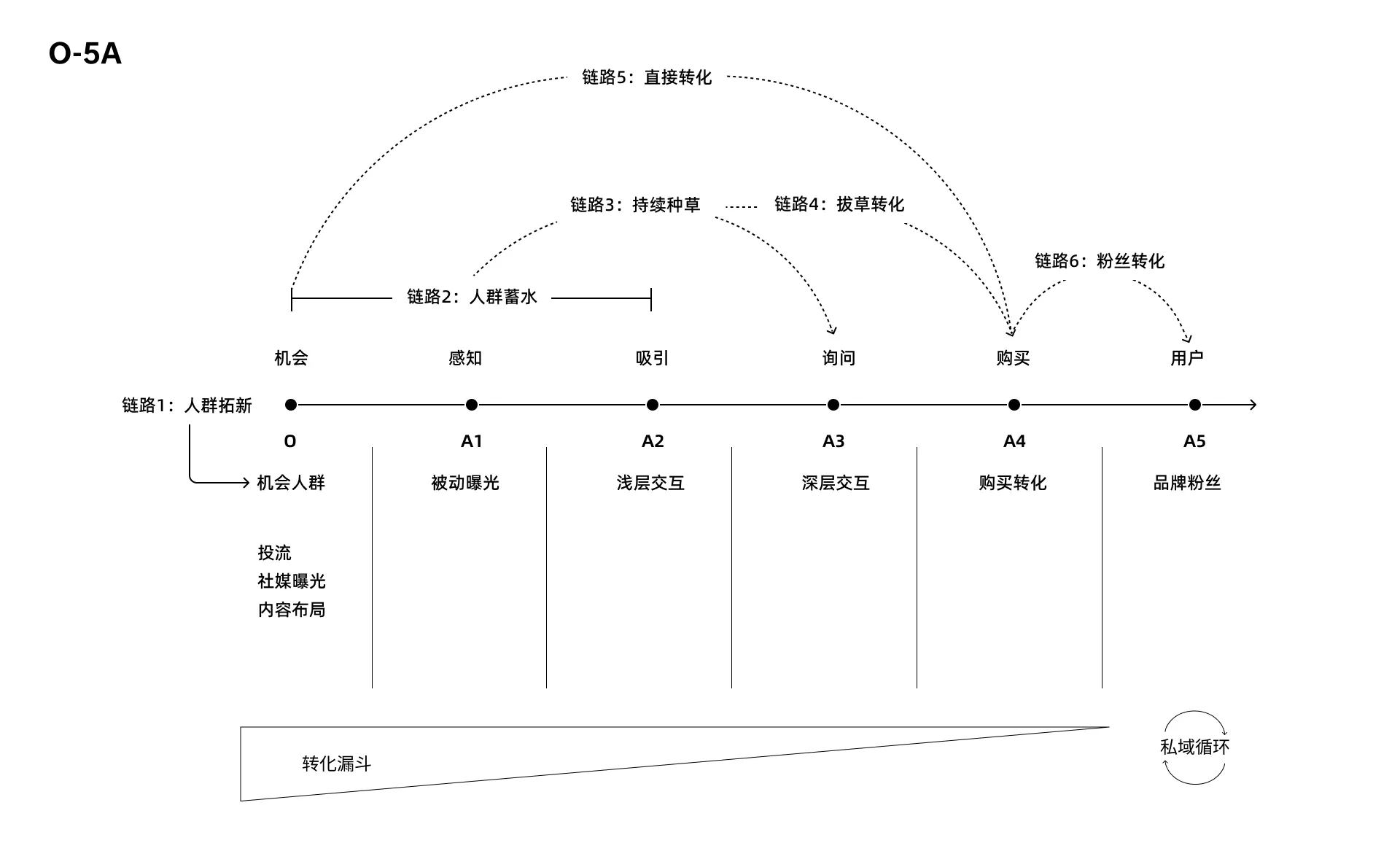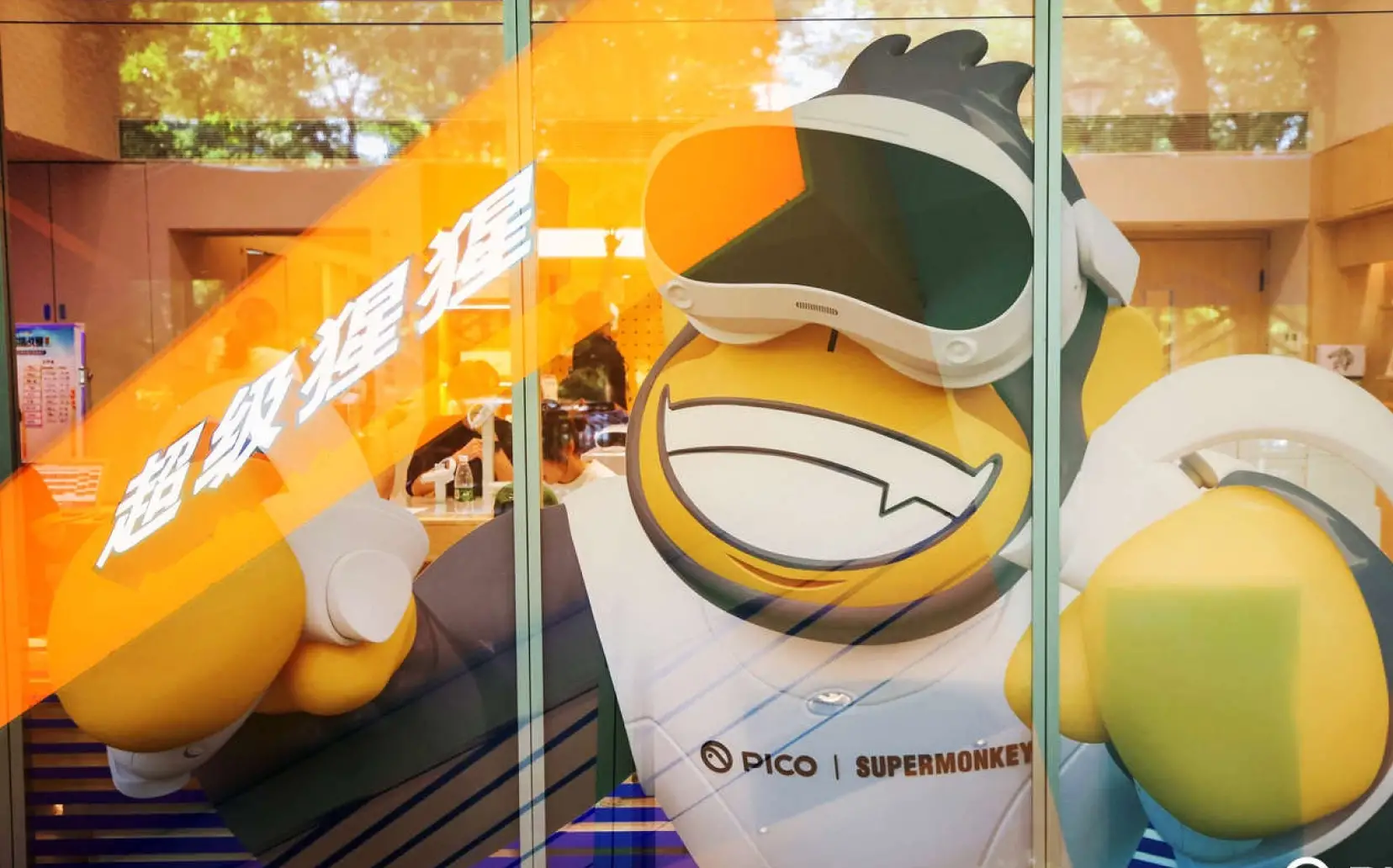Flow curves and cycles
In the e-commerce space, the concept of traffic curves and cycles is critical to understanding brand growth and sales dynamics. Integrated e-commerce platforms such as Amazon and brand-independent sites exhibit different life cycle characteristics in terms of traffic acquisition and maintenance.
Traffic curve of integrated e-commerce platforms
Take Amazon as an example, its traffic curve shows a relatively stable growth. As brands continue to operate on the platform, they gradually accumulate good word-of-mouth and sales through the provision of high-quality goods, good customer service and positive interaction. This positive cycle drives continued growth in store traffic, creating a self-reinforcing model. In this model, high sales lead to more positive reviews, which in turn attract more customers, further boosting sales. This mutually reinforcing relationship allows brands to achieve more stable growth on integrated e-commerce platforms.
Traffic Cycle for Branded Standalone Sites
Compared to integrated e-commerce platforms, brand independent sites have the opposite traffic curve and require more proactive strategies to drive traffic growth. That is, at the initial stage of product launch, brands need to attract users' attention and engagement through active promotion and marketing activities.
This may include using special events, holiday promotions, or new product launches to create buzz, raise brand awareness, and maximize initial traffic.
Once the user's attention has been captured, user conversion needs to be accomplished through quality products and services that turn first-time visitors into loyal repeat customers.
With the launch of new products and market response, traffic will reach a peak, but then it will gradually enter a stabilization phase and eventually come to an end. During this process, independent sites need to constantly innovate and adjust their strategies to maintain and boost traffic again. This may mean launching new products regularly, optimizing the user experience, enhancing social media interactions or trying new marketing channels.
The launch of a new product is one of the most critical marketing opportunities that isWeighting more important opportunities than Double 11 and Black Friday promotions (as mentioned earlier, the product is the most important core of brand independence).. New product launches have the potential to significantly increase brand awareness, increase brand premiums and attract traffic. A well-planned new product launch strategy not only clearly differentiates a brand from its competitors, but also boosts website conversions, customer satisfaction (NPS), and gross merchandise volume (GMV), giving independent brands a leg up in a competitive marketplace.

Continuous optimization of the traffic cycle
Both integrated e-commerce platforms and brand-independent sites require continuous optimization and management of the traffic cycle.
This includes keen insights into market trends, in-depth understanding of user behavior, and constant innovation in marketing strategies. By using data analytics to guide decision-making, brands can better grasp the peaks and valleys of traffic and make timely adjustments to their strategies in response to market changes.
Also, building strong brand loyalty is key to maintaining the traffic cycle. By providing exceptional customer service, building an emotional connection, and creating a unique brand experience, users can be encouraged to spread the word of mouth, resulting in a naturally growing traffic cycle.
Classification of users corresponding to different stages
Each stage of the new product cycle corresponds to a different type of user with different buying behaviors, needs and contributions to the brand. Understanding these user characteristics is critical to developing an effective marketing strategy. In the following, we will discuss in detail the characteristics of users at each stage of the new product cycle and the corresponding marketing strategies.
Initial phase: head sheep users
In the initial phase of a new product launch, it attracts headcount users who are willing to try new things and are looking for a fresh experience. These users are usually curious about new products and are willing to pay extra for them. They are not only early adopters, but also a key force in brand communication.
- Honorary incentives: Brands can empower these users with a sense of honor by offering exclusive trials, limited edition products, or special recognition, thus enhancing their brand loyalty and communication.
- Ambassadors & Assessors: Leverage the social influence of these users to become brand advocates and product reviewers, and attract more potential users through their recommendations.
Intermediate stage: follow the user
As the product penetrates the market, it begins to attract a wider group of following users. This segment accounts for the majority of users in the market, and their purchasing decisions are often influenced by reviews and word-of-mouth from pre-existing users.
- Material and word-of-mouth accumulation: Enhance the credibility and attractiveness of the product by collecting and displaying positive reviews, usage experiences and case studies from pre-existing users.
- Effective communication and marketing strategies: Combine social media marketing, content marketing and partnerships to expand the product's market reach and attract more followers.
End stage: value-for-money sensitive users
When a product enters the end stage of its life cycle, the target users shift to those consumers who are more price sensitive. They may be waiting for price reductions or promotions on the product to get better value for money.
- Holiday promotions and specific discounts: Attract this segment of users to make purchases through strategies such as limited-time discounts, holiday promotions, or bundled sales.
- Liquidation or end of product life cycle: For products with faster functional updates and iterations, you can take clearance sales or phase out old products to prepare for the launch of new products.
Special case: products with fast iteration of feature updates
For products with a faster rate of renewal and iteration, such as technology products, the product life cycle may be shorter, requiring more frequent clearance or price reduction strategies to adapt to market changes.
- Connect with seasonal changes or fashion trends: For products with a long life cycle, such as wigs, a price reduction or clearance strategy can be combined with seasonal changes or fashion trends to maintain the competitiveness of the product in the market.
In response to the different user characteristics at each stage of the new product cycle, brands need to adopt flexible and versatile marketing strategies. Through precise market positioning, effective user communication and timely promotional activities, the market performance and sales of new products can be maximized.
At the same time, brands also need to constantly pay attention to market dynamics and consumer feedback in order to adjust their strategies in time to adapt to the changing market environment.
Digital Product Cycle Case
The digital products market is known for its rapid technological advancements and product iterations, so an efficient product cycle model is critical to a brand's continued success. Not only does this model continue to capture consumer interest, but it also ensures that the brand remains viable and competitive in the marketplace. Below, we'll explore the stages of this ideal model and what they mean for digital product brands in more detail.
New Products
The stage of new product launch is the starting point of the whole cycle and it marks the birth of a new digital product. At this stage, brands need to attract consumers' attention and pique their interest in the new product through well-planned campaigns.
- Innovative features: New products should have innovative features or significant performance improvements that differentiate them from existing products on the market.
- pre-marketing: Warm up through social media, advertising and PR campaigns to create buzz and anticipation in advance.
New Products
The new product campaign is the phase immediately following the launch to further drive product sales and enhance the brand's market presence.
- Experiential activities: Organize new product experience activities to allow consumers to experience the advantages of the product first-hand, thus facilitating purchasing decisions.
- time-limited offer: Offer initial purchase incentives, such as discounts, bundles, or giveaways, to stimulate consumers' desire to buy.
product lifecycle
The lifecycle of a digital product usually consists of three phases: launch, stabilization and epilogue. During this process, brands need to continuously optimize product performance, adjust marketing strategies, and prepare for the release of next-generation products.
- listing stage: The product has just been introduced to the market and needs to increase its visibility and market share through various marketing tools.
- plateau: The product has gained a firm foothold in the market, at which point attention should be paid to improving user satisfaction and maintaining the brand image.
- end stage: Products are about to be replaced by a new generation of products, and inventory can be cleared by means of price reductions and promotions, etc., in preparation for the launch of new products.
next cycle
After completing a product life cycle, brands should quickly begin the next cycle, which is to launch a new generation of products. This helps maintain the brand's innovative image and continues to attract consumer attention.
- Technology Iteration: Utilizing the latest technological achievements to continuously improve product performance and user experience.
- Market Feedback: Adjust the design and marketing strategy of new products based on the market feedback of the previous generation of products.
For digital product brands, an efficient product cycle model is key to staying competitive in the market. By continuously launching innovative products, organizing engaging new product campaigns, effectively managing the product life cycle, and initiating the next cycle in a timely manner, brands are able to stay ahead of fierce market competition, continue to attract consumer interest, and achieve long-term market success.




